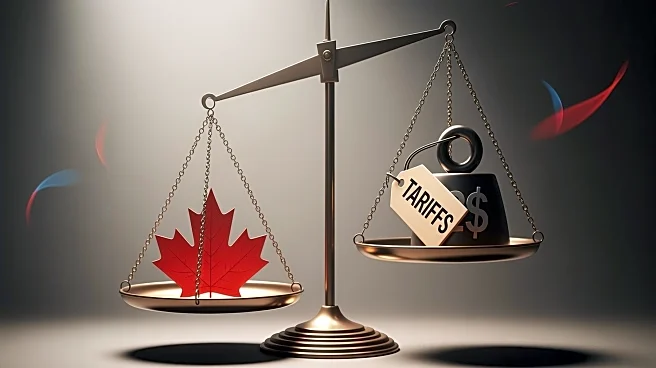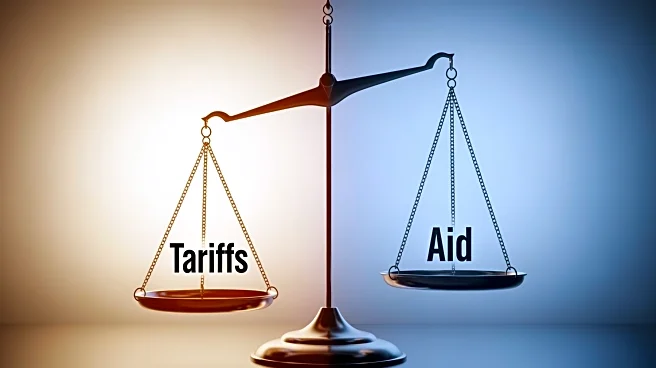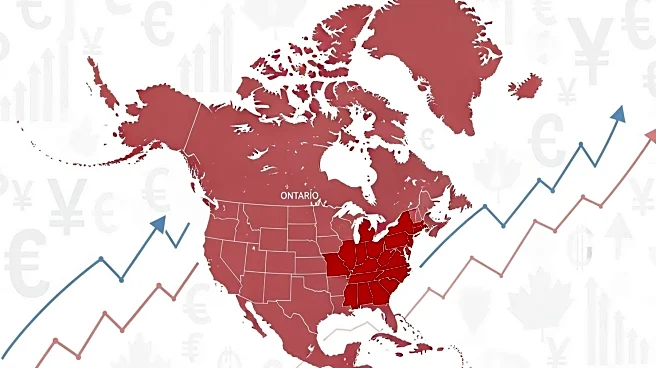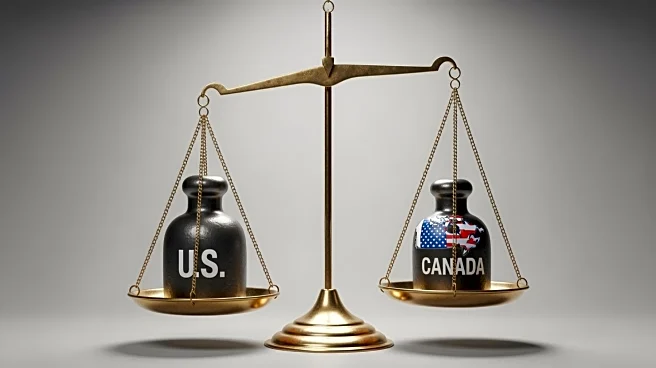What's Happening?
U.S. tariff revenue soared to $195 billion in fiscal 2025, driven by President Trump's sweeping trade levies. The tariffs, enacted under the International Emergency Economic Powers Act (IEEPA), imposed a 10 percent duty on all imports, with higher rates
on specific goods. This policy aims to bolster American manufacturing and reduce reliance on income taxes. However, the tariffs face legal challenges, with the U.S. Trade Court ruling them unlawful. The Supreme Court is set to hear arguments in November, which could lead to refunds of up to $90 billion if the tariffs are struck down.
Why It's Important?
The surge in tariff revenue represents a significant shift in U.S. fiscal strategy, potentially reducing the need for income taxes. However, the legal challenges pose a risk to this revenue stream, with implications for the federal budget and trade relations. If the tariffs are overturned, the U.S. could face substantial financial losses and increased deficits. The situation highlights the tension between executive authority and legal constraints, as well as the broader impact of trade policies on international relations and domestic economic stability.
What's Next?
The Supreme Court's upcoming decision will be pivotal in determining the future of the tariffs. A ruling against them could lead to significant refunds and a reevaluation of fiscal strategies. The Trump administration may need to explore alternative revenue sources or legislative solutions to maintain fiscal balance. The outcome will also influence trade negotiations and economic policies, with potential repercussions for global supply chains and U.S. manufacturing.













